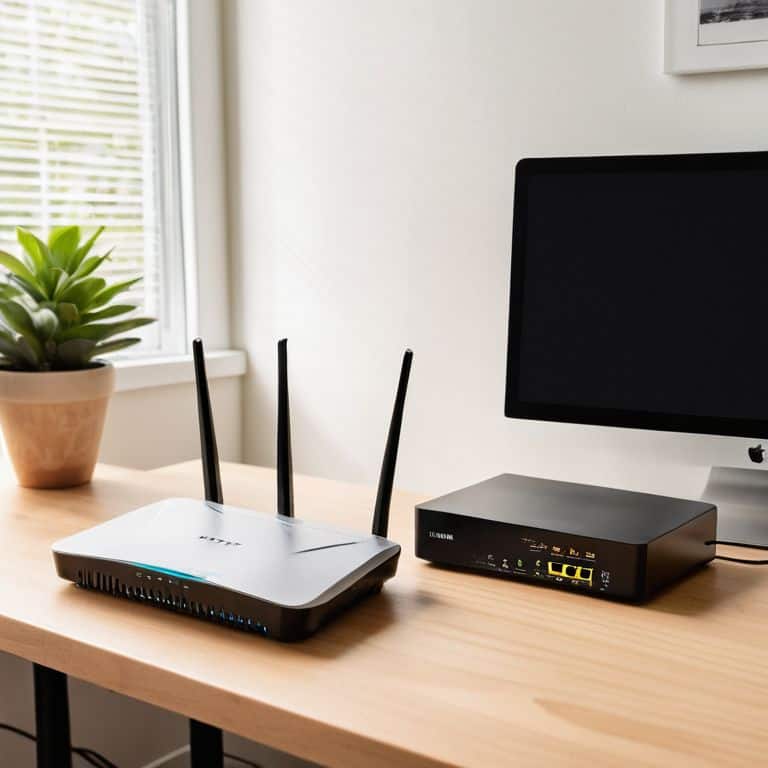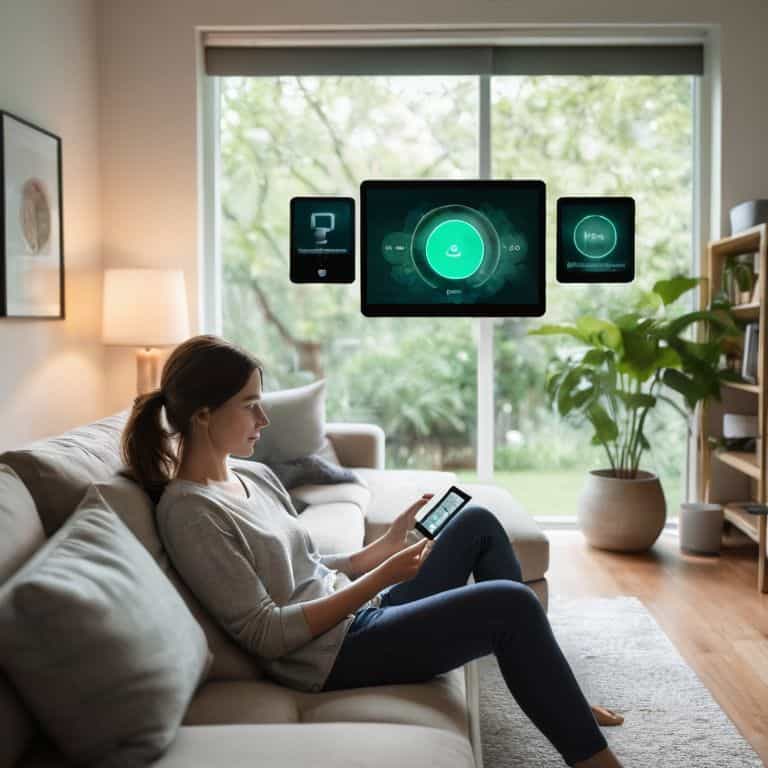I still remember the day I realized that my smart home devices were not as secure as I thought. I was trying to figure out how to secure your smart home devices, and it hit me – the whole process is a total pain, but someone has to do it. The myth that securing your smart home devices is a straightforward, one-size-fits-all solution is just that – a myth. In reality, it’s a complex process that requires a deep understanding of the devices themselves and the potential vulnerabilities they pose.
So, what can you expect from this article? I’ll give you the lowdown on practical tips and tricks to secure your smart home devices without losing your mind. I’ll share my personal experience and expertise to help you navigate the process, from understanding the basics of device security to implementing advanced measures to protect your home network. My goal is to provide you with honest and actionable advice that will help you take back control from the devices that rule our lives. By the end of this article, you’ll know exactly how to secure your smart home devices and enjoy the benefits of smart technology without compromising your security.
Table of Contents
Guide Overview: What You'll Need

Total Time: 1 hour 45 minutes
Estimated Cost: $10 – $30
Difficulty Level: Easy
Tools Required
- Computer or Smartphone (with internet connection)
- Router (for network configuration)
- Password Manager (optional)
Supplies & Materials
- Strong Passwords (unique for each device)
- Two-Factor Authentication (enabled for all devices)
- Firmware Updates (regularly checked and installed)
Step-by-Step Instructions
- 1. First, let’s get started with the basics: changing default passwords. This is the most obvious step, but it’s also the most overlooked. When you set up your smart home devices, make sure to change the default passwords to something unique and secure. I like to use a combination of letters, numbers, and special characters to make it virtually unguessable. Take your time, and don’t rush through this step – it’s the foundation of your smart home security.
- 2. Next, it’s time to enable two-factor authentication (2FA) on all your devices. This adds an extra layer of security, making it much harder for hackers to gain access to your system. I recommend using an authenticator app, like Google Authenticator or Authy, to generate time-based one-time passwords. It might seem like a hassle, but trust me, it’s well worth the extra step.
- 3. Now, let’s talk about network segmentation. This means separating your smart home devices from your main home network. By doing so, you’re reducing the attack surface and preventing hackers from moving laterally across your network. I like to use a guest network for all my IoT devices, keeping them isolated from my main network. It’s like having a separate room for your gadgets – they can still communicate with each other, but they’re not interfering with the rest of your digital life.
- 4. Another crucial step is to keep your devices up to date. Manufacturers often release firmware updates to patch security vulnerabilities, so it’s essential to stay on top of these updates. I recommend setting up automatic updates for all your devices, but also make sure to monitor the update process to avoid any potential issues. It’s like keeping your car’s software up to date – you want to make sure you have the latest security features and performance enhancements.
- 5. It’s also important to use a reputable VPN (Virtual Private Network) to encrypt your internet traffic. This is especially important when you’re accessing your smart home devices remotely. I like to use a VPN that doesn’t keep logs of my activity, ensuring that my data remains private. It’s like having a secure, encrypted tunnel for your internet traffic – even if someone intercepts your data, they won’t be able to read it.
- 6. Next up, let’s discuss physical security. This might seem obvious, but it’s often overlooked. Make sure to physically secure your devices, especially those that contain sensitive information, like your router or smart hub. I recommend keeping them in a locked cabinet or a secure location, out of reach from prying eyes. It’s like keeping your valuables in a safe – you want to protect them from unauthorized access.
- 7. Finally, it’s essential to monitor your network activity regularly. I like to use a network monitoring tool to keep an eye on my devices and detect any suspicious activity. This can help you identify potential security issues before they become major problems. It’s like having a security camera for your network – you can see what’s going on and take action if needed. By following these steps, you’ll be well on your way to securing your smart home devices and protecting your digital life.
Securing Smart Homes

As we delve deeper into the world of smart homes, it’s essential to consider the iot device protection measures that can be taken to safeguard our personal space. One crucial aspect is smart home network configuration, which involves setting up a secure and isolated network for our devices. This can be achieved by creating a separate network for our IoT devices, ensuring that they are not directly connected to our primary network.
Regular security audits are also vital in maintaining the integrity of our smart home systems. By conducting periodic checks, we can identify potential vulnerabilities and address them before they become major issues. Device encryption methods can also be employed to add an extra layer of protection, making it more difficult for unauthorized parties to access our devices.
To further enhance security, it’s crucial to focus on smart device password management. This involves using unique and complex passwords for each device, as well as enabling two-factor authentication whenever possible. By taking these steps, we can significantly reduce the risk of our smart home devices being compromised, and enjoy a more secure and peaceful living environment.
Iot Device Protection Essentials
When it comes to protecting your IoT devices, I always say it’s about layering your defenses. Think of it like building one of my intricate automatons – each component, no matter how small, plays a crucial role in the overall mechanism. For your smart home, this means regularly updating firmware, using strong passwords, and enabling two-factor authentication. It’s not rocket science, but it’s astonishing how often these simple steps are overlooked.
I’m also fascinated by the creative ways people are repurposing old devices to add an extra layer of security. For instance, using an old router as a network bridge to segment your IoT devices from the rest of your network. It’s this kind of outside-the-box thinking that inspires me to look at technology as a tool, not a tyrant. By taking these extra precautions, you’re not only safeguarding your devices but also cultivating a healthier relationship with the technology in your life.
Smart Home Network Configuration
To really lock down your smart home, you need to think about your network configuration. This is where most people get tripped up – they don’t realize that their router is the gateway to their entire smart home ecosystem. I always recommend changing the default settings and setting up a guest network for your IoT devices. This way, even if someone manages to breach your smart light bulb (yes, it’s a thing), they won’t be able to access your main network.
By segregating your devices, you’re adding an extra layer of security to your smart home. It’s like building a moat around your castle – it may not be impenetrable, but it makes it a lot harder for unwanted visitors to get in. And trust me, when it comes to your personal data, you want to make it as hard as possible for hackers to get a foothold.
Taking Control: 5 Essential Tips to Secure Your Smart Home Devices
- Change default passwords and usernames for all devices, because let’s face it, ‘admin’ is not a secure password
- Keep your devices and their software up to date, as those updates often patch security vulnerabilities that hackers love to exploit
- Use a guest network for your IoT devices to segregate them from your main network, reducing the attack surface for potential hackers
- Implement a strong firewall and consider investing in a network security appliance to monitor and control incoming and outgoing traffic
- Regularly audit and remove any unnecessary devices or apps connected to your smart home system, because the fewer doors you have, the fewer opportunities for intruders
Key Takeaways for a Smarter, Safer Home
By taking control of your smart home devices and configuring them with security in mind, you can significantly reduce the risk of unauthorized access and data breaches
Implementing robust IoT device protection and smart home network configuration strategies is crucial for maintaining the integrity and privacy of your home network
Ultimately, achieving a secure smart home environment requires a combination of technical know-how, careful device selection, and mindful usage habits, allowing you to reap the benefits of smart technology while minimizing its risks
The Human Touch in Smart Home Security
Securing your smart home devices isn’t just about updating software and setting strong passwords; it’s about reclaiming your space from the potential vulnerabilities that come with convenience, and intentionally designing a relationship with your technology that serves you, not the other way around.
Javier "Javi" Reyes
Taking Control of Your Smart Home

As we’ve explored the world of smart home security, it’s clear that securing your devices is not just about following a set of instructions, but about cultivating a mindset of awareness and intention. From understanding the unintended uses of technology to configuring your smart home network, every step counts in protecting your personal space. By taking the time to grasp the essentials of IoT device protection and smart home network configuration, you’re not just safeguarding your devices, you’re also reclaiming your digital autonomy.
So, as you move forward with your smart home, remember that the true power lies not in the devices themselves, but in how you choose to use them. By being mindful of your technology use and embracing a human-centric approach, you can turn your smart home into a haven that truly serves you. Let’s make our devices work for us, not the other way around, and create a future where technology enhances our lives without controlling them.
Frequently Asked Questions
What are the most common vulnerabilities in smart home devices that hackers exploit?
Honestly, it’s often the basics that trip us up – weak passwords, outdated firmware, and open ports. Hackers also love exploiting vulnerabilities in device communication protocols, like Bluetooth or Wi-Fi. And let’s not forget about the humble USB port, which can be a sneaky entry point for malware. It’s like leaving your front door unlocked, inviting trouble in.
How can I ensure that my smart home devices are updated with the latest security patches without constant manual checks?
For a hands-off approach, consider enabling auto-update features on your devices or investing in a smart home hub that streamlines firmware updates – it’s like having a personal tech butler, keeping your gadgets secure without the constant manual checks.
Are there any specific smart home devices or brands that are considered more secure than others, and what sets them apart?
Honestly, some brands like August and Nest have a better track record with security, thanks to regular updates and robust encryption. What sets them apart is a focus on transparency and user control, allowing you to make informed decisions about your smart home’s security.
